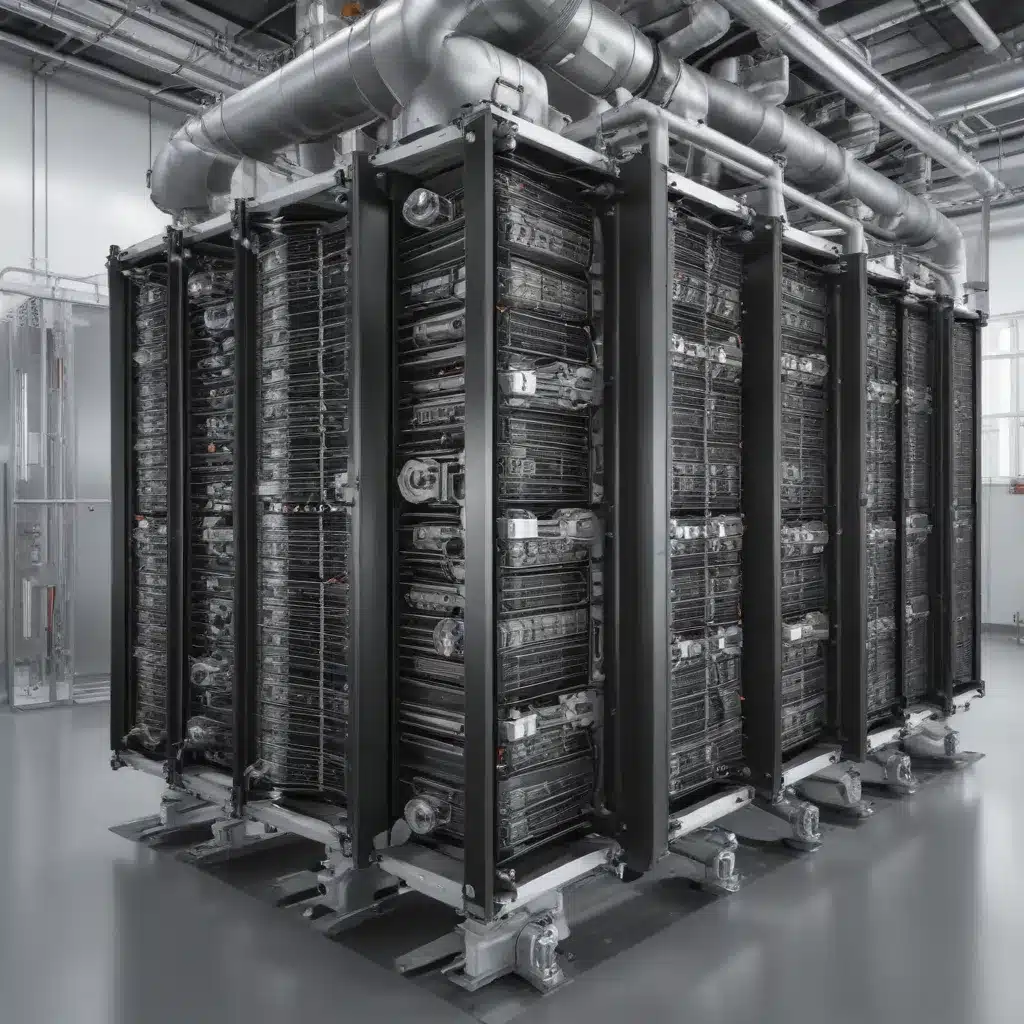
The Importance of Optimizing Air-Cooled Heat Exchanger Performance
As the world becomes increasingly digitalized, the demand for energy-efficient cooling solutions in data centers and industrial facilities has never been more critical. Air-cooled heat exchangers play a vital role in maintaining equipment efficiency and environmental sustainability, making them a focal point for research and innovation.
While many studies have examined the classification and optimization of cooling systems, systematic reviews using advanced analytical techniques are relatively scarce. In this article, we delve into the latest advancements in air-cooled heat exchanger design, control strategies, and performance evaluation, exploring how emerging technologies can help unlock new levels of energy efficiency.
Classifying Cooling Systems and Identifying Optimal Applications
Data center cooling systems can be broadly classified into two categories: air-cooled and liquid-cooled. Each approach has its own advantages and disadvantages, depending on the operational environment, heat load, and energy efficiency requirements.
Air-Cooled Systems:
– Suitable for low-to-medium heat loads
– Relatively simple and cost-effective to install and maintain
– Require adequate airflow and have limited cooling capacity compared to liquid systems
Liquid-Cooled Systems:
– Capable of handling high heat loads
– More energy-efficient due to the superior heat transfer properties of liquids
– Require more complex infrastructure and maintenance
By understanding the unique characteristics of these cooling systems, facility managers can make informed decisions on the most appropriate solution for their specific needs. This review aims to provide practical guidance on selecting the optimal cooling technology based on various operational factors.
Optimizing Airflow Uniformity in Air-Cooled Heat Exchangers
One of the key factors that influences the energy efficiency of air-cooled heat exchangers is the uniformity of airflow across the heat transfer surfaces. Uneven airflow can lead to localized hot spots, reduced heat transfer rates, and increased energy consumption.
Recent studies have demonstrated that optimizing the design of static pressure chamber baffles can significantly improve airflow uniformity and, consequently, the overall performance of air-cooled heat exchangers. By strategically positioning and shaping these baffles, engineers can better control the airflow patterns, ensuring even distribution and maximizing heat transfer efficiency.
Furthermore, the integration of advanced computational fluid dynamics (CFD) simulations and optimization algorithms has enabled the systematic exploration of baffle geometries and their impact on airflow dynamics. This computational approach allows for the rapid evaluation of multiple design iterations, leading to more efficient and cost-effective heat exchanger configurations.
Leveraging Artificial Intelligence and Machine Learning for Automated Optimization
As the complexity of heat exchanger systems continues to grow, the need for intelligent control and optimization algorithms becomes increasingly apparent. Artificial intelligence (AI) and machine learning (ML) technologies offer promising solutions to automate data collection, performance analysis, and real-time optimization.
By incorporating AI and ML into the monitoring and control systems of air-cooled heat exchangers, facility managers can:
-
Automated Data Collection and Analysis: AI-powered sensors and data acquisition systems can continuously monitor a wide range of operational parameters, such as temperature, pressure, and airflow rates. Machine learning algorithms can then analyze this data, identify patterns, and detect any anomalies or deviations from optimal performance.
-
Predictive Maintenance and Fault Detection: AI models can learn from historical data to predict when maintenance is required, helping to prevent unexpected equipment failures and reduce downtime. Additionally, these models can quickly identify the root causes of performance issues, enabling targeted troubleshooting and optimization.
-
Real-Time Optimization and Control: Advanced control algorithms leveraging AI and ML can dynamically adjust parameters, such as fan speeds, damper positions, and set points, to maintain optimal heat exchanger performance in response to changing environmental and load conditions. This intelligent control can significantly enhance energy efficiency and operational resilience.
By embracing these cutting-edge technologies, air-cooled heat exchanger operators can streamline their maintenance practices, improve system reliability, and achieve substantial energy savings – all while reducing their environmental impact.
Standardizing Energy Efficiency Metrics for Global Benchmarking
As the industry continues to focus on sustainability and environmental stewardship, the need for globally recognized energy efficiency metrics has become increasingly important. Current energy efficiency assessment methods often vary across regions and industries, making it challenging to benchmark performance and identify best practices.
To address this issue, industry stakeholders and policymakers should collaborate to establish standardized energy efficiency metrics for air-cooled heat exchangers. These metrics should consider factors such as:
- Energy Consumption: Measuring the total energy consumed by the heat exchanger system, including fans, pumps, and associated components.
- Heat Transfer Efficiency: Evaluating the ratio of heat transferred to the energy input, providing a direct measure of thermal performance.
- Carbon Footprint: Assessing the greenhouse gas emissions associated with the heat exchanger’s operation and lifecycle.
- Water Consumption: Tracking the water usage for any evaporative or hybrid cooling components.
By adopting a global standard for energy efficiency assessment, the air-cooled heat exchanger industry can promote transparency, facilitate cross-regional benchmarking, and drive continuous improvements in sustainability and environmental stewardship.
Conclusion: Embracing Innovation for a Sustainable Future
As the demand for energy-efficient cooling solutions continues to grow, air-cooled heat exchangers stand at the forefront of technological advancements. By leveraging the latest developments in computational fluid dynamics, artificial intelligence, and control optimization, industry professionals can unlock new levels of performance and energy savings.
Through collaborative efforts to standardize energy efficiency metrics and share best practices, the air-cooled heat exchanger community can lead the way towards a more sustainable future. By embracing innovation and empowering facility managers with the right tools and strategies, we can collectively transform the way we approach thermal management, creating a greener, more resilient, and more prosperous world.
To stay informed about the latest trends and innovations in air-cooled heat exchanger technology, be sure to visit https://www.aircooledheatexchangers.net/. Our experts are dedicated to providing the most up-to-date and insightful information to help you optimize your cooling systems and achieve unparalleled energy efficiency.

